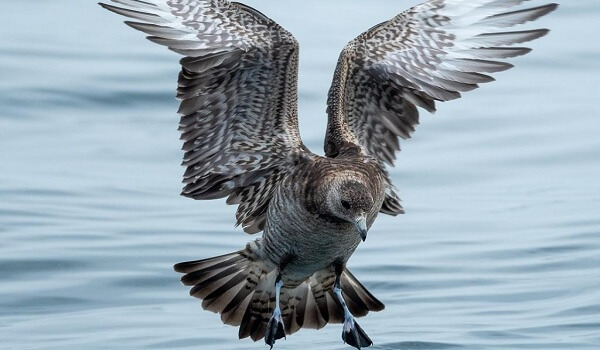Bird enthusiasts were able to document rare ‘pelagic’ birds throughout 2023 just off the Karnataka coast.Besides pelagic birds, Karnataka has drawn attention to land-based species, with the New Mangalore Port (NMP) transforming into a green port, fostering avian diversity.
Key Facts Pelagic Bird
- Pelagic birds are birds that spend a large portion of their lives on the open ocean.
- They can be found thousands of miles offshore but can get blown onto land during high winds and storms. The only other time they come inland is to breed.
Features
- These birds vary greatly in size and description from each other, but they all live on open water, dive for food, and are excellent swimmers.
- Pelagic birds possess remarkably long, slender wings enabling extended flights without rest.
- Some can stay airborne for days or weeks, even sleeping during flight.
- These birds feature a unique salt gland that extracts salt from seawater, preventing its accumulation to toxic levels.
- They feed on planktonic crustaceans (related to shrimp and crabs), and squid and hunt fish far from land.
Examples
- One of the better-known pelagic birds is the Laysan Albatross, which breeds almost exclusively on the Hawaiian islands but roams the nutrient-rich waters of the Pacific to feed.
- Pelagic birds also include Sooty Shearwater, Brown Skua, Brown Booby, Streaked Shearwater and Masked Booby, Pomarine Skua, Arctic skua, Long-tailed skua, Swinhoes storm-petrel, Wilson’s storm-petrel, and other oceanic wanderers.
Threats
- Human activities pose threats to birds, including those in remote open oceans.
- Seabirds, globally, face significant threats, with issues arising both from terrestrial nesting grounds and oceanic factors.
- Oil spills, climate change-induced alterations to prey availability, and fishing nets contribute to the challenges.
- The decrease in pelagic bird density is attributed to a decline in fish populations, possibly influenced by factors such as sea rains pushing fish to deeper waters.
- Plastic pollution is a major concern for pelagic birds, as plastics persist in oceans, breaking into smaller pieces.
- Birds often mistake plastic fragments for prey, leading to ingestion and associated health risks.

